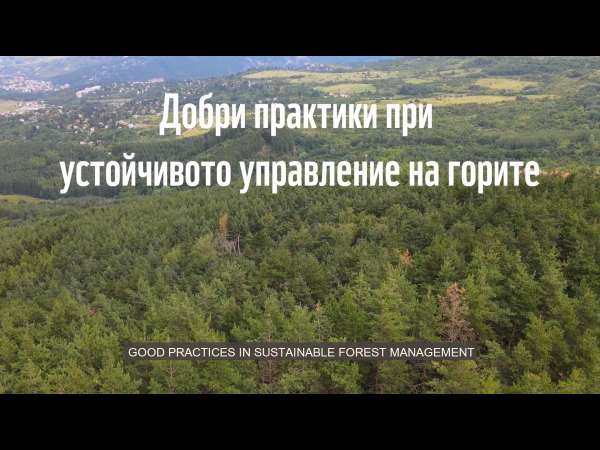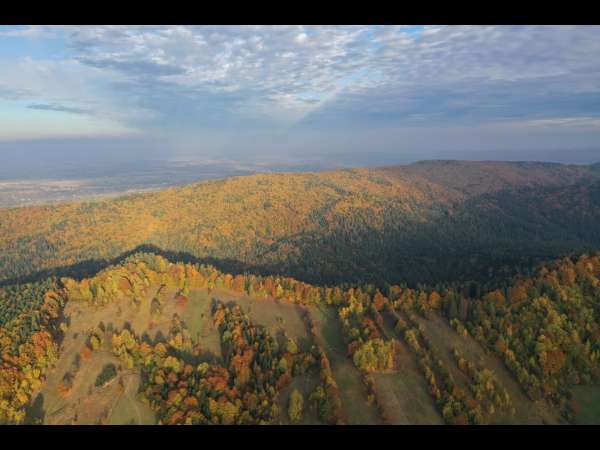Unfortunately, unsustainable natural resource use and management practices, climate change and illegal logging pose major threats. Furthermore, fragmentation and destruction of habitats happens through infrastructure development for example roads and ski resorts, fuelled by poor nature law enforcement and governance.
WWF-CEE is among the key players in promoting the conservation and sustainable management of forests in the region, able to work across national borders as well as sectors.
PRESENT FOCUS OF THE WWF-CEE FOREST PROGRAMME
- Mapping and protection of remaining Old-Growth Forests in Central and Eastern Europe, a true European treasure.
- Promotion of Forest Stewardship Council (FSC) certification as a means to achieving sustainable forest management, including biodiversity conservation.
- Developing and advocating for wood traceability systems and policies for the control of illegal logging as well as training of stakeholders and customs officials.
- Policy advocacy for a governance framework that incentivises sustainable forest management and integrates biodiversity conservation objectives.
- Promoting management practices that build resilience of forest ecosystems against the effects of climate change such as droughts, windfalls and bark beetle attacks.
- Designing mechanisms for reducing the demand for firewood, a driver for overexploitation of forests.
- Helping forest-dependent local communities to benefit from sustainable forest management and conservation, in particular in the frame of the WWF partnership with IKEA.
WHAT HAS BEEN DONE
- WWF has made big progress in Hungary with identifying sanctuary forests (aiming to protect at least 100,000 ha) and on Old-Growth Forest (OGF) protection particularly in Ukraine (now at 70,000 ha) and Bulgaria (now at 190,000 ha).
- WWF has made progress in understanding why illegal logging is happening and has developed a toolbox of how to combat it through higher transparency and the use of innovative means (e.g. apps, GIS platforms, involvement of activists, workshops). A new EU-LIFE project on coming to grips with sustainable forest biomass use is expected to show new solutions for one of the drivers of illegal logging.
- National FSC standards are in various stages of review and adoption, which WWF-CEE used as opportunity for recommending improvements.
- The LIFE CLIMAFORCEE project started to develop solutions for climate-smarting forest management.
- WWF advocated for the introduction of a method for establishing a wood fingerprint to increase transparency of certified wood.
- WWF-CEE managed to get sustainable forest management measures into the draft EU Common Agricultural Policy (CAP) Strategic Plans and National Recovery and Resilience Plans. In Ukraine the stakeholder platform WWF initiated has greatly increased our leverage. Our involvement in WWF network efforts to shape the EU Forest Strategy has shown some impact and resulted in a European WWF forest position reflecting needs in CEE.
- A new co-operation with IKEA started with focus on improving forest governance.
OUR VISION FOR THE NEXT DECADE
- Protection of all Old-Growth Forests in CEE (365,000 ha)
- Substantial expansion of forests under conservation management
- Illegal logging under control
HOW WILL WE DO IT?
- We will not only secure full protection for all remaining Old-Growth Forests in our region through policy advocacy work, but also introduce financial reward mechanisms for private and municipal owners of such forests to keep them preserved.
- In line with the 2030 EU Biodiversity Strategy, we will conserve the biodiversity values of other high nature value forests in our region and make them resilient to climate change by shifting to close-to-nature forest management, strengthening FSC standards, and engaging companies and authorities in scaling up their commitment to conservation of forest habitats.
- We will develop and support implementation of a vision for integrated forest management and conservation with relevant authorities and stakeholders within our partnership with IKEA to shape integrated forest governance frameworks and enable the effective conservation and sustainable use of forests, particularly by local communities.
- Thanks to capacity building for national and local authorities and adoption of technical solutions for tracing wood developed by WWF and partners, we will improve prosecution of forest crimes.













































